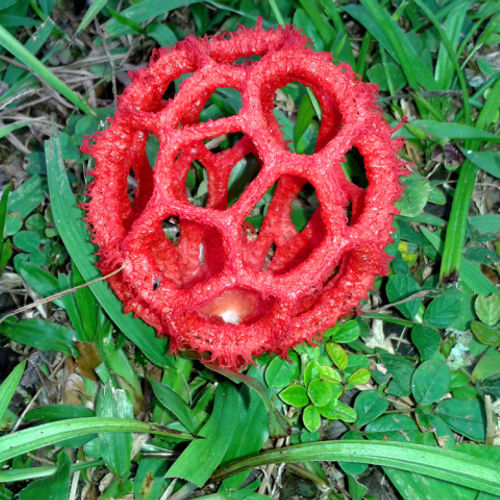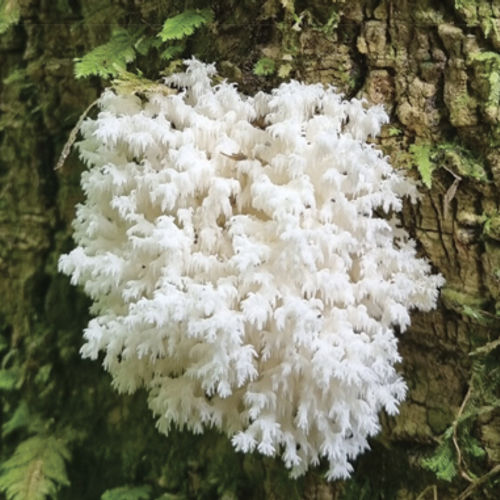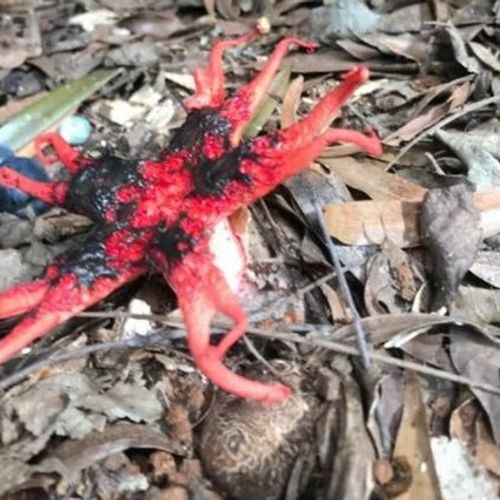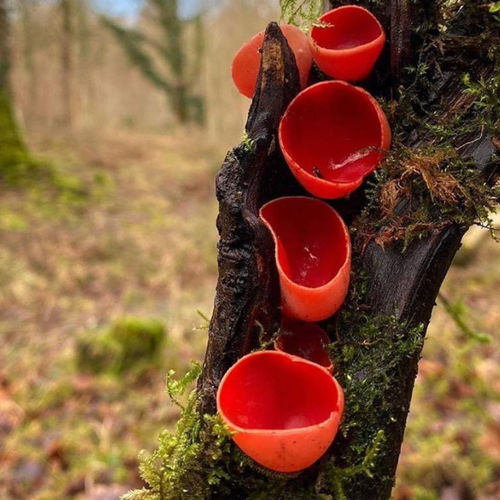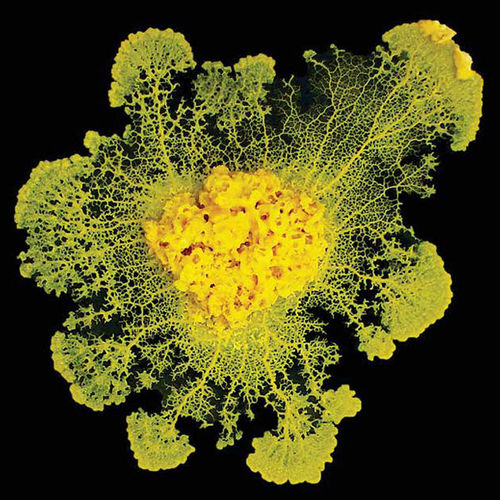
| Added | Mon, 07/11/2022 |
| Источники | |
| Дата публикации | Mon, 07/11/2022
|
| Версии |
Imagine that you are walking through the forest and your foot touches a log. On its underside there is something wet, yellow and branching into beautiful fractal branches.
This is plasmodium Physarum polycephalum, a multi-headed slime mold. Like other slimy molds found in nature, it plays an important ecological role, helping to decompose organic substances in order to then return them to the food web.
This bizarre little organism has neither a brain nor a nervous system; its bright yellow body is just one cell. This kind of slimy mold has thrived, more or less unchanged, for a billion years in its damp habitats.
And in the last decade, he has changed our understanding of cognition and how to solve complex problems.
"I think this is the same revolution that happened when people realized that plants can communicate with each other," says biologist Audrey Dussoutour from the National Center for Scientific Research of France. "Even these tiny microbes can learn."
P. polycephalum, to which Dussutur gave the charming nickname "The Ball", is not a rare species. It can be found in a dark, moist, cool environment, for example, in a deciduous litter in a forest. In addition, it is very unusual: although we call it "mold", it is not actually a fungus. This is not an animal or a plant, but a representative of the kingdom of the protists - a kind of comprehensive group for everything that cannot be unambiguously attributed to the other three kingdoms.
It begins its life as a set of individual cells, each with a single nucleus. Then they merge to form plasmodium, a vegetative stage of life in which the body feeds and grows.
In this form, diverging through the veins in search of food and studying the environment, it still remains a single cell, but contains millions or even billions of nuclei floating in the cytoplasmic fluid enclosed in a bright yellow membrane.
Like all organisms, P. polycephalum needs to be able to make decisions about the environment. He must seek food and avoid danger. He needs to find the ideal conditions for his reproductive cycle. And that's where our little yellow friend becomes really interesting. P. polycephalum has no central nervous system. He doesn't even have specialized tissues.
However, he can solve complex puzzles, such as mazes, and memorize new substances. Such tasks that, as we thought before, only animals can do.
"We're talking about cognition without a brain, obviously, but also without neurons at all. Therefore, the basic mechanisms, the whole architecture of how it works with information, is completely different from how your brain works," says biologist Chris Reed from Macquarie University in Australia. "By setting him the same tasks to solve problems that we have traditionally set for animals with brains, we can begin to understand how this fundamentally different system can come to the same result. This is where it becomes clear that for many of these things - which, as we have always believed, require a brain or some higher information processing system - it is not always necessary."
P. polycephalum is well known to science. Decades ago, as physicist Hans-Gunther Debereiner from the University of Bremen in Germany explained, it was the "workhorse of cell biology." It was easy to clone, store and study.
However, with the development of genetic analysis tools, organisms such as mice or cell strains such as HeLa have been replaced, and P. polycephalum has faded into the background.
In 2000, biologist Toshiyuki Nakagaki from Japan's RIKEN Institute resurrected him-and not for cell biology. His article, published in the journal Nature, was called "Solving mazes by an amoeboid organism" - and that's exactly what P. polycephalum did.
Nakagaki and his team placed a piece of plasmodium at one end of the maze, a food reward (oats, because P. polycephalum likes oat bacteria) at the other, and watched what was happening.
The results were stunning. This strange little acellular organism was able to find the fastest way through all the mazes that were offered to it.
"This sparked a wave of research into what even more complex scenarios we can experience slime mold in," says Reed. "Almost all of them were more or less unexpected and surprised researchers with how the slime mold actually manifested itself. Some limitations have also been revealed. But mostly it was a journey with revelations about how this simple creature can perform tasks that have always been set and considered the lot of higher organisms."
Nakagaki recreated the Tokyo subway with station nodes marked with oats; P. polycephalum recreated it almost exactly - except that the slimy mold version was more resistant to damage, and if some link was severed, the rest of the network could continue to work.
Another group of researchers found that this species can effectively solve the traveling salesman problem, an exponentially complex mathematical problem that programmers usually use to test algorithms.
Earlier this year, a group of researchers found that P. polycephalum can "remember" the places where it previously found food, based on the structure of veins in this area. This followed previous research by Dussutur and her colleagues, who found that a slimy mold can study and remember substances that it does not like, and transmit this information to other slimy molds after they merge.
"I am still amazed at how, in a sense, complex they are, because they always surprise you in an experiment, they will never do exactly what you want," says Dussutur.
In one case, her team was testing a medium for growing mammalian cells and wanted to see if slime would like it.
"She hated her. She started building this strange three-dimensional structure so she could move on the lead and escape. And I said: "My God, this organism is intelligent."
Although technically a unicellular organism, P. polycephalum is considered a network demonstrating collective behavior. Each part of the slimy mold works independently and exchanges information with neighboring parts, without centralized processing.
"I think the analog could be neurons in the brain," Reed said. "You have one brain made up of many neurons - the same thing happens with mucosal mold."
This analogy with the brain is really intriguing, and this is not the first time that P. polycephalum has been compared to a network of neurons. The topology and structure of the brain and mucosal mold networks are very similar, and both systems exhibit oscillations.
It is not entirely clear how information is distributed and exchanged in the mucous mold, but we know that the veins of P. polycephalum contract and act as a peristaltic pump, distilling cytoplasmic fluid from section to section. And the fluctuations in this fluid seem to coincide with encounters with external stimuli.
"It is believed that these oscillations transmit information, process information, interact with each other, and actually simultaneously create behavior," Debereiner said in an interview with ScienceAlert. "If the Physarum network goes to a certain food, then when it encounters sugar, it changes the nature of fluctuations: it begins to fluctuate faster. Because of these faster fluctuations, the whole body begins to change its pattern of fluctuations and begins to flow in the direction where the food was found."
In 2021, he and his colleagues published a paper in which they demonstrated that these oscillations are extremely similar to the oscillations observed in the brain, only it is a hydrodynamic system, not electrical signals.
"What matters is not so much what fluctuates and how information is transferred," he explains, "but that it fluctuates and that topology matters - whether one neuron is connected to 100 neurons or only two; whether a neuron is connected only to its neighbors or it is connected to another neuron located very far away.".
No matter how exciting his actions may seem, any researcher working with him will tell you that P. polycephalum itself is not a brain. As far as we can tell, he is not capable of high-level data processing or abstract thinking.
As intriguing as this idea may look, slime is also not capable of evolving into something similar to a brain. The organism has had a billion years to do this, and it shows no signs of moving in that direction.
From the point of view of general biology, mucosal mold is extremely simple. And it is this fact that changes our understanding of problem solving.
Like other organisms, it needs food, it needs to navigate the environment, it needs a safe place to grow and reproduce. These problems can be complex, and yet P. polycephalum can solve them with its extremely limited cognitive architecture. He does it in his own simple way and with his limitations," says Reed, "but that in itself is one of the beautiful features of the system."
In a sense, this leaves us with an organism-a wet, slimy, damp-loving clot-whose cognition is fundamentally different from our own. Ion can teach us new ways to solve our own problems.
"It teaches us the nature of intelligence by challenging certain views and essentially expanding the concept," Reed said. "It forces us to challenge these long-held anthropocentric beliefs that we are unique and capable of much more than other beings."
Новости со схожими версиями
Log in or register to post comments

